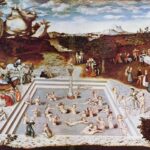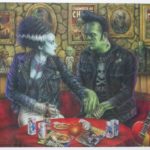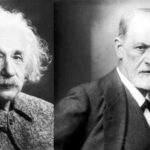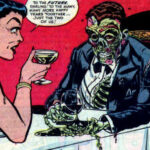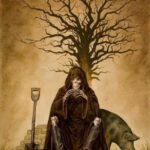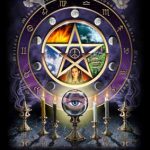Factor of changes for Death in our culture and society
Factors associated with these changes in cultural death systems include:
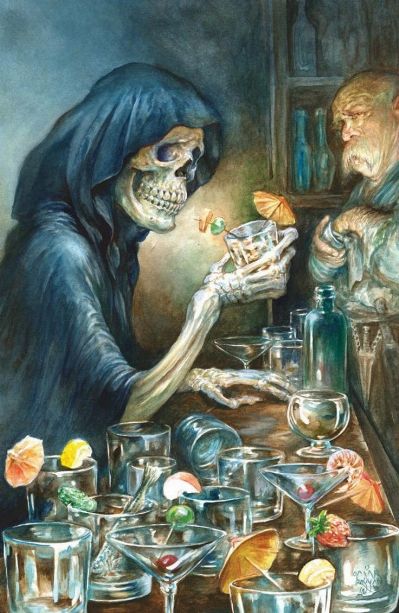
Changes in social structure
The challenge of death is most extreme within small, primitive societies where famine, disease, or war could lead to the destruction of the entire group. As populations increased the need for greater social coordination and control gave rise to large bureaucratic structures. Within these, roles became more important than their replaceable occupants. This idea of being disposable and replaceable is, of course, a major assault on individuals’ sense of dignity and esteem, making their deaths relatively insignificant events.
Changes in bonds between people.
Simon et al say that with the continuing secularization of social life and the “declining belief in an unquestionable logic to the events of life, including death…there is a declining possibility of sharing in powerful rituals that make real attachment to collective identities.”
Urbanization brought a fundamental shift in the “social gravity” binding a people. For most of human history this force of social attraction entailed the intimate bonds between homogeneous residents of small communities. Here individuals knew one another as whole persons, and they grew old together. Here the death of one of the community’s members could not be ignored for the loss was genuine. It had to be ritually marked by community-wide outpourings of grief in order to assist the stricken group to reestablish and reintegrate itself.
Nowadays this social gravity features the impersonal bonds linking heterogeneous and interdependent strangers within large urban areas. Interpersonal no longer are based on mutual affection but rather on the achievement of complementary goals. Total selves are irrelevant to most social interactions; we now interact toward most others solely on the basis of the roles that they play. Here the scope of grief is limited to the family and friends of the deceased, who are given but a few days off from work before being expected to return a social system usually unaffected by the death.
Changes in the conception of self-hood.
The contemporary self that faces death is considerably different from the selves of the past. Nineteenth century self-hood was, as was the case through most of the past and remains the norm in many cultures, more collectivist in orientation. Personal extinction did not hold the terror it currently does because the ultimate social unit–namely, one’s tribe or clan–continued to survive despite the singular deaths of its members. As Roy Baumeister develops in The Meanings of Life (1991), with increasing individualism and value-relativism, the quest for identity and self- knowledge has become people’s primary source of life meaning. This has made the self more vulnerable to death as death now takes away both life and what gives it value.
Changes in who dies
From youth to the elderly as the culture’s death lepers. One has but to look at the demographics of developing societies to see where we once were. In civilization’s earliest period, women’s average life span may have been less than 28 years and infant mortality as high as 75 percent. The connection between death and childhood largely remained in this country through the eighteenth century. Nowadays, so relatively rare have childhood deaths become that the parental grief occasioned by stillbirths and miscarriages may be relatively equal to the parental grief of the past following the deaths of young children.
Indeed, death has become the province of the elderly, with nearly 80 percent of all deaths in this country occurring to individuals over 65 years of age. The assumption that citizens will live to see their biblical three score and ten years is reflected in a new statistic of the federal government: YPLL, “years of potential life lost” when people die before the age of 65. In many ways the American “problems” of old age are bound-up with the “problems” of dying. Gauging from their increasing segregation from other age groups, the elderly are our culture’s “death lepers.”
Changes in when we die
From premature to post mature deaths. While the death ethos of historical societies was shaped by the prevalence of unanticipated and premature deaths, death now typically occurs upon the conclusion of full, completed lives. Instead of dying with one’s proverbial “boots on,” death increasingly occurs among those already disengaged from the social mainstream. When death does occur prematurely, such as when a teenager is murdered or a young father dies in an auto accident, it most often occurs because of manmade (hence avoidable) causes.
Changes in how we die
From Sudden to Slow-motion Deaths. There have been profound changes in the very quality of death. Owing to innovations in public sanitation and medical technology, death now typically occurs in slow-motion due to degenerative diseases, often exhausting the resources and emotions of families. Because of our tendency to depersonalize those most likely to die, slow-motion deaths mean that individuals must now die a number of social mini-deaths before actually physiologically expiring.
For thoughts on role of microbes shaping course of history see Jared Diamond’s “Why Did Human History Unfold Differently on Different Continents for the Last 13,000 Years?”
Media
As human death is typically hidden from everyday life, to what extent are our death socialization and fears shaped by pornographic death in the mass mediums of television, cinema, and music?
In the evening news we are shown bodies lying on the streets of Sarajevo or Belfast. Almost direct, we saw in the very heart of NYC, the twin towers scrambling from the crash of two regular airliners hijacked by terrorists. Sports telecasts focus on crashes, accidents and injuries. US cable networks interrupt kid’s channel to display images of people being being chased by cops. Even cartoons have been criticized for the frequent violent episodes.
Unlike the contacts with real death in the past, media deaths generally do no generate moral and social questions. Instead, according to media critics, we become desensitized to death. Publicized box scores of holiday fatalities on the nation’s roads and death counts from accidents, wars, or natural calamities become as meaningful as sports statistics. Easy claims then can be made that violence saturated media can result in real life violence.
In the case of the war in Vietnam, witnessing the violence of the war on their TV screens appears not to have resulted in an increase of violence in American society, but rather a strong reaction against it. Some researchers argue that screen violence may actually help people to release their aggression and anger in a harmless way. The Vietnam war case is not conclusive as there was many Americans involved, much as in the the Twin Towers Tragedy (3T). Some research indicates that our reaction to the media is more complex than this. We each have different experience, understanding and attitudes, which effect the way we react to media violence.
Should we ban violence on media ?, no because when the purpose is to inform or educate, the violence may be evaluated quite differently than where the intention is clearly pure entertainment.
There will always be those within our society who are more vulnerable than others to the impact of disturbing, violent images. Children in particular do need protection from more extreme material as they are less able than adults to recognize the difference between real and pretended violence. It is therefore more likely that they will try to transfer the actions they see on the screen into real life.
New rituals and perception of Death today
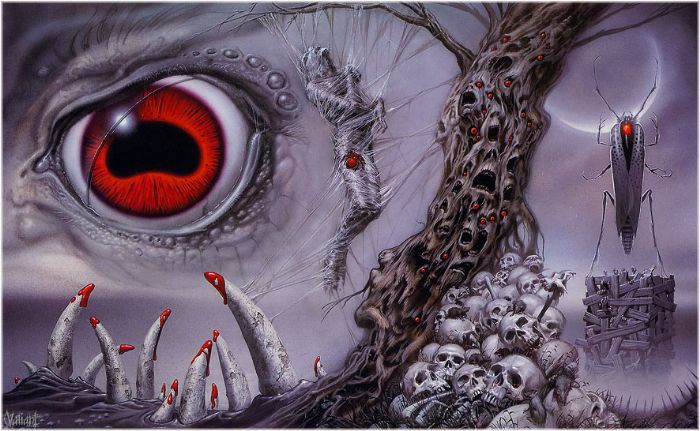
The banishment of death
Attracted, repulsed, fearful, and curious, our attitudes toward death are ambivalent and reflect the dual character of our post-modernizing society which blurs the boundary between life and death.
Since the post-World War II, the U.S.A has been considered as a death-denying society. Others name it death-distancing society (Kastenbaum 1995, Mellon and Schiller 1993) because death has moved away from individuals into hospitals, hospices and nursing homes, and cremation eliminates the undeniable sign of death, the corpse.
Our societies have banished death from their vocabulary, we have promoted happiness and material possession, and any divergence from them is judged to be problematic or unnatural.
On the other hand, we live in a society that promote violence. According to Pope John Paul II, Western modernity has spawned a culture of death, evidenced by high rates of violence and abortion and growing acceptance of euthanasia.
Contributing to our millennium jitters are renewed fears of death from the natural order, either due to uncontrollable natural phenomena or because of human disruptions of ecosystems.
However, in the 1960s and 1970s, the death taboo was shattered. The death awareness movement produced an array of scholarly and popular literature and raised a multitude of issues including the “right to die,” “death with dignity,” and organ donation. We also attend a rejuvenation of the death rituals that are more centered on the individual.
The end of religion
If Death was an absolute end, many would find life devoid of meaning. Moreover, moral would not even exist because whatever behaviour, as evil or virtuous, selfish or altruistic, or whatever one achieved, the conclusion remained the same, total nothingness and extinction of the self.
But humans generally have not accepted this perspective. And throughout most of history, religion has been the social institution controlling the rituals and knowledge associated with death. Its message has generally been the same: life does not conclude with death, but rather one is resurrected, reincarnated, absorbed into some collective over soul, or moves on to some heaven, hell, or world of shades.
Such consolations, however, carry a price. By creating and maintaining anxieties related to death (e.g., being consigned to hell instead of heaven, or being forced to go through another round of reincarnation instead of reaching nirvana) and the nature of one’s immortality, religion developed perhaps the most effective mechanism of social control ever devised. Consider how many generations have lived their lives in the complete certainty that they would have to face some sort of judgment after death, that their every action was being observed by some grand evaluator.
With modernization and secularization, religion is losing its historic monopoly over death, most notably to the medical and legal institutions. As a result, death became transformed from being something natural and respected into something unnatural and shameful.
Simon et al (1993) assert that, in post-modernizing society, persistent change has dislodged us from the past while the decline in faith in rationality and its promise of continual progress toward a brighter future threatens our ability to link ourselves with that future. This suggests that individuals in the postmodern era view themselves only as part of the present. In addition, with the absence of overarching, transcendent meanings of death (which have been provided by religion) on which to draw, individuals have only their immediate environment in which to find meaning for death.
Social control of death
On the one hand, developed western countries endeavor to fight the agents of death mainly through medical research, social security and crime control, on the other hand the same governments devote significant budgets to raise wars and maintain criminality through drugs prohibition and racial discrimination for instance. Worldwide, for every dollar currently spent per pupil for education, twenty-five are spent per soldier
By deconstructing death into those things that kill us and then attempting their eradication, modern political systems have become the master agencies of social control. It is not so much Eisenhower’s military-industrial, but rather a medical-military-industrial complex that has evolved as the skeletal structure of the social organism. During the 1980s, military and health-care employment were the major sources of job growth in the United States, creating one in four new jobs. It can be argued that death beliefs and fears have become increasingly politicized, replacing their traditional religious counterparts as mechanisms of social control.
The transformation of death rituals
Since World War II, the funeral industry helped by medicine has progressively removed people from direct involvement in the care and ceremony of a deceased loved one. The corpse has been removed from the home, dressed and preserved by professionals, and the service has moved from the church to the funeral home, where it may be conducted, without active participation of the mourners, by professionals who do not even know the deceased.
Nevertheless, we discover that people try to re-appropriate their death and make personal choices about the ritual that should surround their death. The rise in U.S. cremation rates signals the close of the modern era and the emergence of the postmodern. The initial use of cremation without ceremony in the early 1970s reflects the radical breaks with tradition which were taking place in society. Since earth burial has been the nearly-universal method of body disposition throughout U.S. history, the increasing use of cremation indicates a radical shift in values, ideologies and behavior.
Ancient Western funeral customs are being revived, modified and incorporated into contemporary funerals. The use of cremation is an ancient Roman rite which has not been widely used for approximately 1,000 years (Irion 1968, Morris 1992). Keeping ashes in a locket is reminiscent of the 19th-century Anglo custom of keeping a lock of the deceased’s hair in a locket. This suggests an increasing tendency to connect to the past, to locate oneself in the ongoing cycle of human life, rather than to see oneself as separate and temporal, springing from no where and headed no where.
Personalized and pluralistic, self-generated, secular, and historical, these new forms of ritual suggest widely-shared ideological currents in the postmodern U.S.
The personalization of death
One of the most prominent and pervasive changes in death rituals is their personalization. Reflecting the pervasiveness of change, some mainstream religions have modified their traditional death rituals in response to secular and pluralistic pressures. As in American society as a whole, the funeral is being modified to accommodate increasingly varying ideologies and personal needs. This trend toward personalization is a response to the depersonalization people feel in relation to social institutions. This depersonalization includes the professionalization of medicine and the funeral industry which, having progressively removed people from direct participation in their own or a loved one’s care, treats them in a rationalized, segmented manner as if they were no more than a disease or a corpse.
Secular, or non-church rituals, may include photos of the deceased, or the display of personal items which were significant to the deceased. If the body is viewed prior to cremation, the deceased may be informally dressed, or dressed in a manner congruent with her/his identity. Popular music may be used, ashes may be scattered in a place that represents the deceased’s identity or ideological views, and mourners may directly participate in the rituals through song, poems, prayer, or scattering of the ashes.
Reflecting the ideological diversity, availability of choice, and freedom of individual action evident in post modernity, various types of rituals, memorials and ashes disposition are being combined to create a multitude of funeral patterns. Becoming more personalized, secular, pluralistic, historical and less formal, rituals more closely reflect the nature of individuals than that of formal social structures.
References
The Denial of Death is a 1973 book by American cultural anthropologist Ernest Becker. The author builds on the works of Søren Kierkegaard, Sigmund Freud, Norman O. Brown, and Otto Rank to discuss the psychological and philosophical implications of how people and cultures have reacted to the concept of death. It is the main work responsible for the development of terror management theory.
The premise of The Denial of Death is that human civilization is ultimately an elaborate, symbolic defense mechanism against the knowledge of our mortality, which in turn acts as the emotional and intellectual response to our basic survival mechanism. Becker argues that a basic duality in human life exists between the physical world of objects and biology, and a symbolic world of human meaning. Thus, since humanity has a dualistic nature consisting of a physical self and a symbolic self, we are able to transcend the dilemma of mortality by focusing our attention mainly on our symbolic selves, i.e. our culturally-based self esteem, which Becker calls “heroism”: a “defiant creation of meaning” expressing “the myth of the significance of human life” as compared to other animals.
This symbolic self-focus takes the form of an individual’s “causa sui project,” (sometimes called an “immortality project,” or a “heroism project”). A person’s “causa sui project” acts as their immortality vessel, whereby a person creates meaning, or continues to create meaning, beyond their own life-span. By being part of symbolic constructs with more significance and longevity than one’s body—cultural activities and beliefs— one can gain a sense of legacy or (in the case of religion) an afterlife. In other words, by living up to (or especially exceeding) cultural standards, people feel they can become part of something eternal: something that will never die as compared to their physical body. This, in turn, gives people the feeling that their lives have meaning, a purpose, and significance in the grand scheme of things i.e. that they are “heroic contributors to world life” engaged in an “immortality project.”
Immortality projects are one way that people manage death anxiety. Some people, however, will engage in hedonic pursuits like drugs, alcohol, and entertainment to escape their death anxiety—often to compensate for a lack of “heroism” or culturally-based self-esteem—a lack of contribution to the “immortality project”. Others will try to manage the terror of death by “tranquilizing themselves with the trivial” i.e. strongly focusing on trivial matters and exaggerating their importance — often through busyness and frenetic activity. Becker describes the current prevalence of hedonism and triviality as a result of the downfall of religious worldviews such as Christianity that could take “slaves, cripples… imbeciles… the simple and the mighty” and allow them all to accept their animal nature in the context of a spiritual reality and an afterlife.
Humanity’s traditional “hero-systems”, such as religion, are no longer convincing in the age of reason. Becker argues that the loss of religion leaves humanity with impoverished resources for necessary illusions. Science attempts to serve as an immortality project, something that Becker believes it can never do because it is unable to provide agreeable, absolute meanings to human life.
Moreover, Becker argues that the conflict between contradictory immortality projects (particularly in religion) is a wellspring for the violence and misery in the world caused by wars, genocide, racism, nationalism and so forth since immortality projects that contradict one another threaten one’s core beliefs and sense of security
The book states that we need new convincing “illusions” that enable us to feel heroic in ways that are agreeable. Becker, however, does not provide any definitive answer, mainly because he believes that there is no perfect solution. Instead, he hopes that gradual realization of humanity’s innate motivations, namely death, can help to bring about a better world.

